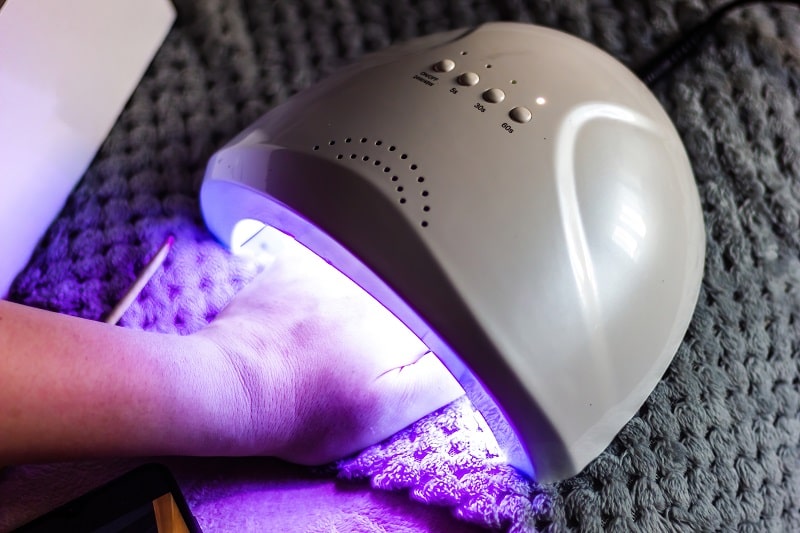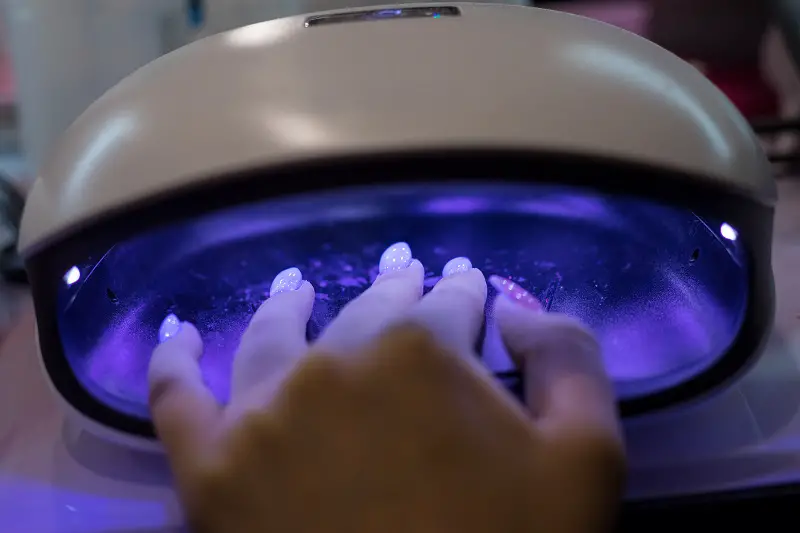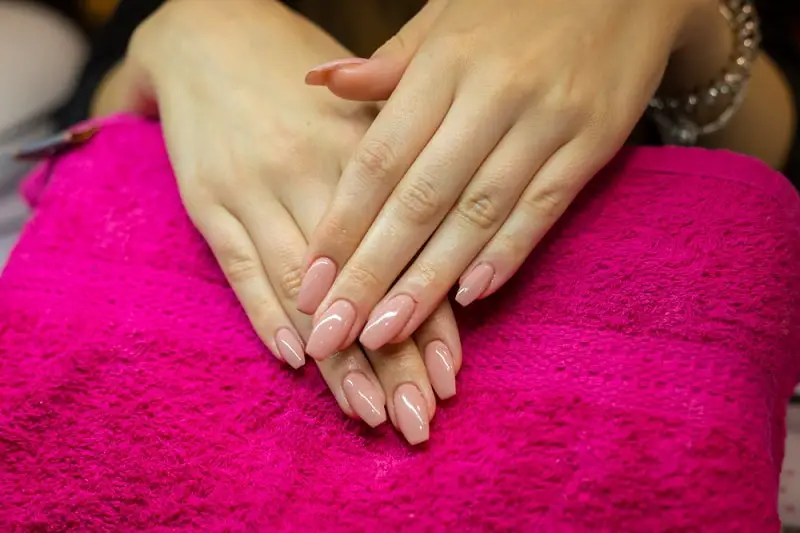If you’ve recently hopped on the trend of Polygel nails, it’s likely you’re experiencing some unexpected difficulties during application, and may be wondering, “Why are my Polygel nails not curing?”
I’m here to tell you: practice makes perfect, and in the world of beauty this couldn’t be more true. Chances are, if you’re having trouble with your Polygel nails curing, it’s most likely due to some common mistakes many others have made before you.
There are quite a few reasons why your Polygels may not be curing and quite a few solutions that are likely to fix this. In this article I’ll walk you through a few reasons why Polygel nails may not cure properly, and how you can solve this next time the situation arises.
Why Is My Polygel Not Drying?
One of the best features of Polygel vs. other types of nail applications, is the ability it has to never dry out when exposed to air. This thick, soft gel will only dry when cured under an LED light, making it incredibly easy for users to bend and shape the nail however they see fit without a rush.
So, with that information we can assume if your Polygel nails aren’t drying it has something to do with the curing process. There are two big reasons why your Polygel nails may not be drying, no matter how long they’re left to cure.
Polygel Is Too Thick
The LED light not only dries the Polygel, but hardens it. If the product is applied too heavily onto the nail bed, the LED light isn’t able to fully penetrate all the way through to the middle, leaving a “soft spot”.
Too Much Liquid
Polygel nail sets come with a special liquid to dip your applicator brush in, in order to avoid the gel sticking to the brush. While this liquid is necessary, using too much will water down your gel and flood your nail beds, thus making it unable to cure properly.
Why Is My Polygel Sticky After Curing It?
If you’re curing your Polygel nails for the allotted time (and maybe even longer!) and you find they’re still sticky afterwards, it probably means you need to wipe the top coat off. While that may sound redundant to all the work you just spent on those gorgeous nails, let me explain. When oxygen meets any type of gel nail, it becomes sticky.
Even when you layer your gel, each layer will have a semi-sticky top coat. This is why top coat polish is essential to sealing your look. However, most top coat polishes need to be wiped off with a 91% acetone solution in order to remove that final sticky layer. Despite this being an extremely important last step, not many people know this.
Once you’ve wiped the top layer down, you should feel the stickiness disappear. There are no-wipe top coats on the market, however, the reviews on them are quite mixed with many customers encouraging others to stay away if your nail set is white, baby blue, or any light color, as no wipe top coats have a tendency to turn yellow.
Can You Overcure Polygel?
To answer this question simply: yes. However, it all depends on the gel and the curing light. The most common damage seen on overcured nails is discoloration and loss of the glossy finish. In addition, loss of durability is often seen, as the LED light bakes the gel onto the surface of the nail, making it TOO hard.
When gel is too hard it’s much more susceptible to cracking and breakage. Lastly, if you overcure Polygel nails you’ll be unable to remove them later with acetone solution. The acetone solution will be unable to penetrate through and it will require filing the color off, a much more lengthy task.
Do You Need A Dehydrator And Primer For Polygel Nails?
As a general rule of thumb, dehydrators and primers are always a good idea to use before applying any set of nails. This goes for all different types of nail applications, as the dehydrator and primers work together to ensure maximum bonding potential for whatever product is applied.
So, in the case of Polygel nails, using a dehydrator allows the primer to stick to the nail bed. When the primer is able to stick to the nail bed, it can then provide a dry, rough surface for the gel to adhere to. Any oil or grease left on the nail will significantly impact the ability of the base coat to bond to the nail bed, hence why a dehydrator and primer are so important.
How Long Does It Take For Polygel Nails To Dry Without UV Light?
Before I answer this question, I want to clarify that UV light and LED light are two different things. UV light is not recommended for Polygel nails, as the polymers are meant to be cured at specific wavelengths LED lights give off.
You can use a UV light if that’s the only option available, however, it’s not recommended. Using an LED lamp the cure time runs about 30 seconds, whereas a UV lamp would run up to 2 minutes. That being said, it’s almost near impossible to cure Polygel nails without the use of some sort of curing lamp.
There are a few options such as using rays from the sun, soaking your hands in ice water, or applying cooking spray. None of these are recommended by anyone in the beauty community and should be used with caution.
How Do You Harden Polygel?
Unlike regular nail polish, Polygel nails aren’t able to be cured using an air-dry method. The best way to harden Polygel is by the use of an LED light. The LED light is a better option than using a UV light, as it tends to be safer and more economical. Most Polygel nail kits come with an LED light, which can be a major plus for convenience.
Polygel contains a molecule called a photoinitiator. Without taking you back to 8th grade science class, this molecule essentially is the ingredient needed for Polygel to cure under an LED light. In order for Polygel to harden, these molecules must be exposed directly to an LED lamp in order to form bigger chains, thus creating a hard surface.
Final Thoughts: Why Are My Polygel Nails Not Curing?
If you’re experiencing any of the frustrating setbacks associated with Polygel nail application, take heart knowing that many people struggle the first few times around. When in doubt, try, try again, you’ll get the hang of it eventually.
Polygel nail polish is a still newly recent type of nail application that can require many rounds of trial and error to perfect. This doesn’t mean you aren’t able to create a beautiful, long-lasting set of nails at home to boost your self-esteem—it just means you need to do the research necessary to discover what’s holding you back.






